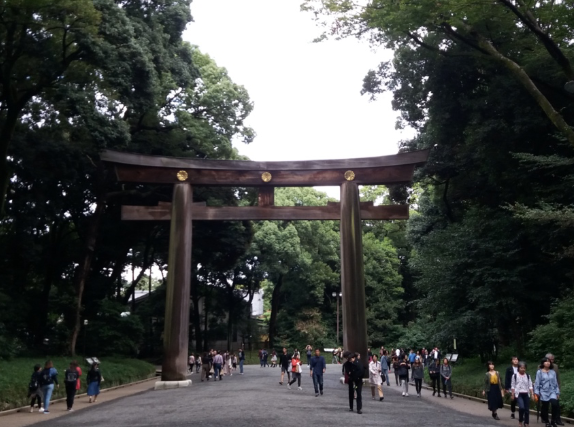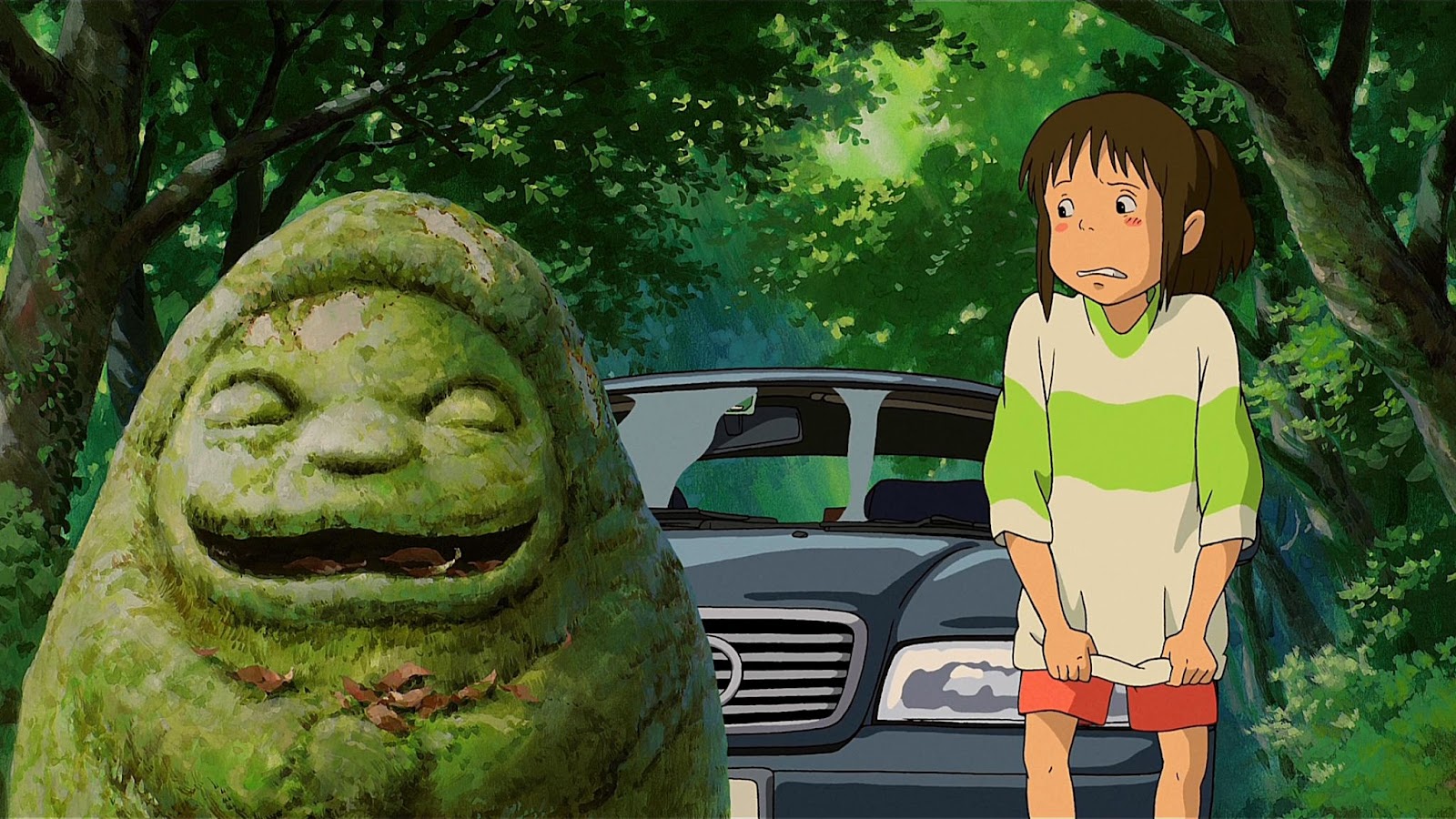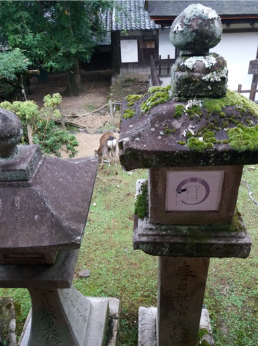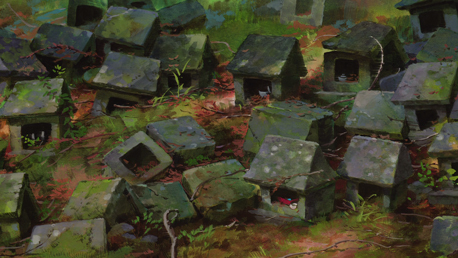Shintoism in Hayao Miyazaki movie “Spirited Away”
Hayao Miyasaki, born in 1941 in Japan, is known for being the co-founder of Ghibli Studios, as well as an award-winning director, animator, scriptwriter and illustrator. Miyasaki is celebrated worldwide for his animated films, and is considered to be one of the most influential figures at a global level when it comes to animated cinema.
One of the most important elements in Hayao Miyasaki’s films is the spirituality, both inner and outer, whether in terms of the esoteric worlds and ambiences, the various creatures and mythical figures, or the individual and collective spiritual beliefs and practices of its characters.
One of the real spiritual beliefs that stand out most in his films is Shintoism, therefore, this article will explore the historical context of the Shinto faith and how it relates to Miyasaki’s films, analyzing one of his most famous animations; “Spirited Away”. Some of the topics of discussion will be mythology, philosophies and spiritual elements, whether these are direct references, inspirations or just possible personal interpretations.
SHINTOISM
Considered the traditional spirituality of Japan, Shintoism is both a polytheistic (worship of more than one deity) and an animist religion (belief that non-human beings, inanimate objects or other phenomena have a spiritual essence) and revolves around the idea of supernatural entities called Kami, also considered as a spiritual essence or energy, who inhabit everything, from forces of nature to specific locations (the most common examples are mountains, lightning, wind, trees, rocks, rivers, waves…), as well as existing Kami linked to elements of human life (clothing, transport, certain types of work).
The Shinto’s belief regarding after-life is that the spirits of ancestors protect their descendants, especially if the descendants offer them prayers or practice rituals to honor them. It is also common for some humans who have lived extraordinary lives, mostly great warriors or members of royal lineages, to become immortalized and revered as deities themselves.
Japan has around 100,000 public shintoist shrines (although it’s not only practiced in shrines), and is, number wise, the biggest religion in the country. More specifically, the majority of Japanese participate in some kind of Shinto rituals, as well as practicing Buddhist rituals (estimations made in the Shukyo Nenkan -Japanese religious annual directory- published by the Ministry of Education and the Bureau of Statistics). This is due to the popular Japanese spiritual conception that religions are not exclusive and inseparable, and the mixture of beliefs and practices from different religions is the most common scenario, which reflects in Miyasaki’s films, which are amalgamations of different concepts and inspirations.
Although Hayao Miyasaki’s films don’t explicitly refer to Shinto or any other religion, various elements of his movies can be interpreted as Shinto beliefs or references, as well as some elements of Shinto faith being shown visually (also because his animations are located in Japan). An example would be the jinja, Shinto shrines, and torii, which are the sacred gates that are located at the entrance or inside the shrines, and represent the symbolic passage from the human world to the sacred world: according to Shinto belief, a person who crosses a torii finds themselves in a sacred place.
 Torii, Tokyo 2017, photography by me
Torii, Tokyo 2017, photography by me
The movie “Spirited Away” (Hayao Miyasaki, 2001) is full of spiritual elements, both visually and in terms of topics and subjects explored.
In the first minutes of the movie, Chihiro’s parents decide to shorten the car journey by taking a shortcut, where a torii is visible on the side of the road. This can either be just part of the traditional Japanese landscape, which naturally has Shinto elements, or an allusion to the fact that the characters are about to leave the earthly world to enter a spiritual world.
 From “Spirited Away”, by Hayao Miysaki, taken the 06/06/2024, 20:05 PM
From “Spirited Away”, by Hayao Miysaki, taken the 06/06/2024, 20:05 PM
After seeing the torii, Chihiro’s family passes several abandoned hokora that are piled on top of each other. Hokora or hokura, a word meaning “receptacle of the kami” or “altar of the kami”, are miniature Shinto shrines that are usually located either near a larger shrine or on the side of roads, built as houses for the kami, namely the dõsojin (the literal meaning of dõsojin is “ancestral deity of the road”). Just after passing the hokora, Chihiro is startled by the statue of a dõsojin, which is a generic type of kami worshiped mainly in the Kantō region of Japan and the surrounding areas, considered to be a guardian of paths and roads, who protects travelers, pilgrims as well as the villages near them.
 Chihiro and the dõsojin, “Spirited Away”, by Hayao Miasaki, 2001
Chihiro and the dõsojin, “Spirited Away”, by Hayao Miasaki, 2001  Hokora, Tokyo, 2017, photography by me
Hokora, Tokyo, 2017, photography by me From “Spirited Away”, by Hayao Miysaki, taken the 07/06/2024, 11:18 AM
From “Spirited Away”, by Hayao Miysaki, taken the 07/06/2024, 11:18 AM
While doing research on this topic, a lot of different interpretations to this subject showed up, and the most simple one being that this would be a sign that the place had been abandoned for some time (just as later the small village appears to be abandoned, until we are confronted with the appearance of the spirits for which that place and the food that Chihiro’s parents consumed was intended), on the other hand, this could almost be seen as a warning that something isn’t right, and that that place isn’t safe. If hokora are the houses of the spirits that protect travelers, them being abandoned could be a foreshadowing that Chihiro’s family would be in danger. Finally, this could be seen also as an allusion to the lack of care towards the spirit world, more specifically, to the lack of well-being of the spirits themselves, since throughout the movie, several of the spirits who visit the thermal baths where Chihiro works are dirty, sick or psychologically corrupted (the mission of the baths would be exactly that one: to bathe them, cleansing them both from the outside and from the inside).
A spirit that is not what it appears to be, it’s the unclean spirit that the witch Yubaba asks Chihiro to bathe, knowing how arduous this task would be. Going against the expectations of those around her, Chihiro succeeds in the mission, discovering that this spirit was actually a River Spirit that was filthy due to pollution caused by humans. This environmental criticism is a common theme in the films of Hayao Myasaki, who often shows the negative consequences that irresponsible human action has on nature from an environmental point of view (for example, in the movie “The Princess Mononoke”, the forest is gradually destroyed to make way for iron mines) and from a spiritual point of view, since nature and divinities are always intertwined in his films, and the neglect of one will directly lead to the destruction of the other.
This concept is also applicable here, since the River Spirit is in a deplorable state and smells from the pollution and filth that the river this deity represents and protects has been subjected to.
Another possible Shinto concept presented to us in this movie is that the status of the spirits can vary: although all kami spirits are considered to be deities, some are considered more important than others. For example, it is observable that deities like the Spirit of the River or the No-Face Spirit (also because of the gold he possesses) are given more importance by the workers, being treated with greater veneration than many of the other spirits who frequent the Bath House. In addition, we know that the spa workers themselves are not human, and although we don’t know exactly what they are, it is implied that they are supernatural entities, some kind of spirit – just like the clients they serve – suggesting the existence of a hierarchy among divinities, just like in Shintoism, where some deities are considered more important than others.

Chihiro and the No-Face spirit, “Spirited Away” , by Hayao Miyasaki
Milice Ribeiro dos Santos, psychologist, University teacher and investigator in the area of family and education, states regarding Miyasaki’s movies:
The story of “Princess Mononoke” explores ecological issues in the struggle with humans who are wasting the forest’s resources and destroying the existing harmony, thus touching on a pertinent theme that concerns young people today. The way the story is told is engaging, with gods and animals, symbolism and fantasy
Many of these films feature charismatic, assertive and resilient characters who can be a positive influence by showing social skills such as cooperation, resistance to stress, and attention to others and to their respective contexts.
Written by Léa Castro Neves
206